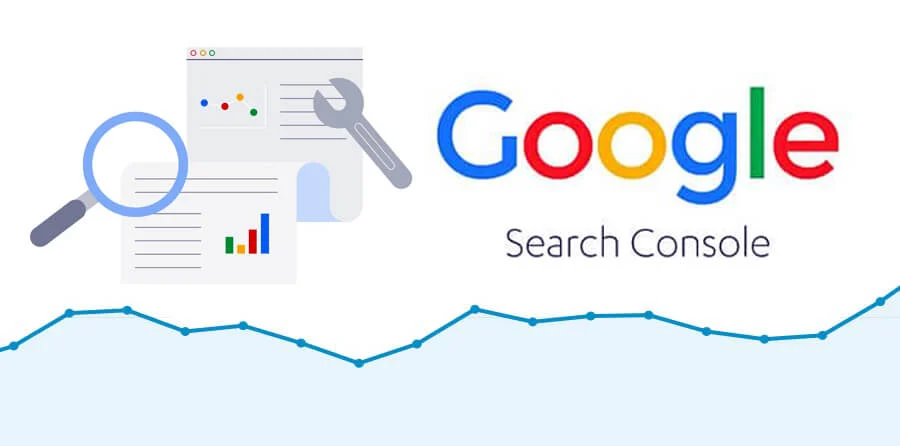Introduction

Google Search Console (GSC) is a powerful tool that offers valuable insights into your website’s performance in Google Search. It plays a crucial role in diagnosing technical SEO issues that could affect your site’s rankings and visibility. From crawl errors to mobile usability problems, GSC makes it easier to identify and fix SEO issues effectively. In this blog, we’ll discuss how to properly identify and resolve common technical SEO issues using Google Search Console.
1. Crawl Errors and Coverage Report
The Coverage Report is one of the most important features in GSC for identifying crawl errors. This report details the pages that Google has indexed and highlights any errors, such as broken pages or server issues, that prevent content from being indexed- an essential step when learning how to fix SEO problems in Google Search Console.
What it reveals: The Coverage Report displays errors such as 404 Not Found, server errors, or soft 404s, which prevent Google from indexing your pages properly.
How to use it: Review the errors listed and investigate the reasons behind them. Pages that are showing up as errors need to be fixed to ensure proper indexing.
Steps to fix:
For 404 errors, either restore the missing pages or set up 301 redirects to the correct URLs.
For soft 404s, redirect them to the most relevant page or delete them if they don’t offer valuable content.
Resolve server errors by addressing server-side issues with your hosting provider.
2. Mobile Usability Issues
With Google’s mobile-first indexing, your website must provide a good user experience on mobile devices. The Mobile Usability Report identifies any issues affecting your site’s mobile performance and helps you fix SEO issues with Google Search Console effectively.
What it reveals: This report highlights mobile-specific issues like text too small to read, clickable elements too close together, or content that doesn’t fit the screen.
How to use it: Check the report for any mobile usability problems and resolve them to ensure that users have a seamless experience on mobile devices.
Steps to fix:
Make videos and graphics load faster on mobile devices.
Adjust font sizes and spacing to make content readable and clickable on smaller screens.
Make sure your website is responsive, meaning it can adjust to different screen widths.
3. Core Web Vitals
Core Web Vitals are essential user experience metrics that impact SEO rankings. The Core Web Vitals report in GSC provides insights into the loading performance, interactivity, and visual stability of your website.
What it reveals: The report displays metrics like Largest Contentful Paint (LCP), First Input Delay (FID), and Cumulative Layout Shift (CLS). Your SEO may be harmed by low scores in these areas.
How to use it: Review which pages are underperforming in these metrics and prioritize improvements for high-traffic pages.
Steps to fix:
Improve server response times to enhance LCP.
Minimize JavaScript to reduce FID.
Avoid layout shifts by defining sizes for images and other elements.
4. Manual Actions and Security Issues
Google Search Console alerts you if your site has been penalized or compromised. The Manual Actions report shows if Google has applied penalties due to violations of its guidelines, such as spammy content or unnatural backlinks.
What it reveals: Manual actions are penalties that can drastically lower your rankings. Similarly, the Security Issues section alerts you to malware or hacking.
How to use it: Take care of the problems listed and ask for a reconsideration review if your website has been penalized. For security issues, take immediate action to remove malware and secure your site.
Steps to fix:
Take down any bad backlinks or poor-quality content, then request a reconsideration.
Fix security issues, remove malware, and secure your site with HTTPS.
5. Sitemap and Index Coverage
Your website’s sitemap helps Google find and index pages more efficiently. You can submit and keep an eye on your sitemap with GSC.
What it reveals: It shows if Google is having trouble accessing or processing your sitemap. Any issues here can hinder Google from indexing your site correctly.
How to use it: Ensure your sitemap is up to date and contains only valid, canonical URLs.
Steps to fix: Update your sitemap to include valid URLs and remove any broken or outdated links.
Conclusion
Google Search Console is an essential tool for diagnosing and fixing technical SEO issues that could negatively impact your site’s performance in search results. By leveraging the Coverage Report, Mobile Usability Report, Core Web Vitals, and Manual Actions, you can identify problems and take corrective actions to improve your website’s health and rankings. Regularly monitoring GSC and addressing any identified issues is key to maintaining an optimized site that delivers a great user experience and performs well in search.